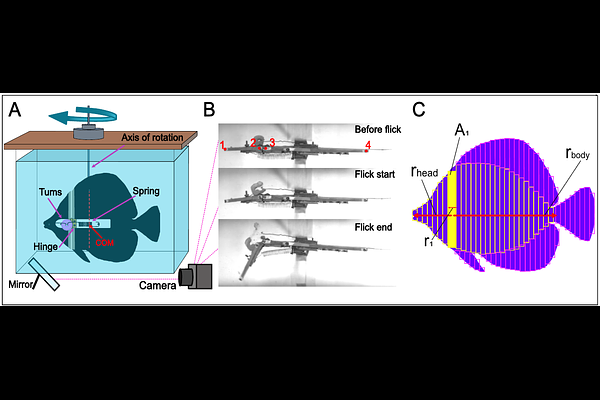Twist and Snout: Head and Body Morphologies Determine Feeding Kinematics in Substrate-Biting Fishes

Twist and Snout: Head and Body Morphologies Determine Feeding Kinematics in Substrate-Biting Fishes
Perevolotsky, T.; Brotman-Krass, J. M.; Ratner, Y.; Avigad, Y.; Summers, A. P.; Donatelli, C. M.; Holzman, R.
AbstractAcross teleosts, feeding by biting substrate-attached prey has evolved multiple times and is associated with convergent morphologies that include a deep body and an elongated, tapered head. However, the functional role of these morphologies in substrate-biting fish is not established. Here, we tested the hypothesis that these morphologies function as control surfaces that affect feeding kinematics during biting. To test this hypothesis, we used simplified physical models of substrate-biting fish and examined the role of head, body, and fin morphology in determining feeding kinematics that facilitate the removal of substrate-attached prey. Models simulated the swift lateral movement of the head, previously documented in species biting substrate-attached algae. Using models that capture the natural morphological variation of biters, we tested (i) how different head morphologies affect the speed of the head and (ii) how different body morphologies affect the stability of the body during head movements. We found that the moment of inertia (MOI) of the head and body explained most of the variation in head speed and body displacement. A decrease in head MOI resulted in faster lateral head movements, known to facilitate removal of attached prey. An increase in body MOI, relative to that of the head, stabilized the lateral displacement of the body during bites. Overall, our results suggest that the laterally compressed bodies and tapered snouts function as control surfaces during feeding in substrate-biting fish. We propose that a selective pressure to extend the lateral surface area underlies the prevailing morphological convergence of biting reef fishes.